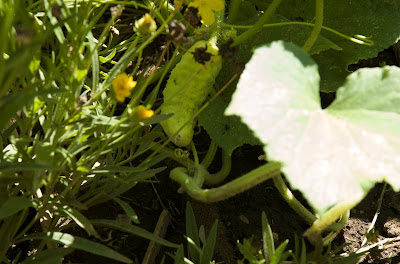Canned white peaches.

Drying white peach slices.

This has been a particularly peachy summer and, as in years past, I decided to can some peaches. I am also trying out the screened, drying rack that my partner made at the end of last summer. I have dried one batch of peaches and have a second batch in there now. I am also drying some apricots from a friend. The climate here is rather hot and dry in summer, so the sliced fruit dries quickly and without the use of electricity. I had tried one of those round, plastic, electric dehydrators one year, and I dried several trays of green beans (which reconstitute okay in soups) and when I had my first batch of tomatoes in there it started to melt the trays and then died. So I returned it and opted for the solar-operated model that has a greater capacity and looks nice too. The racks have food-grade stainless steel mesh (the most expensive part of the system). I'm lucky to live with someone who is handy and willing to build things like this.
Benefits to using the drying rack: no electricity needed, large capacity, will not melt and stop working - or cause a fire due to malfunction, and the dried peach slices are delicious! Canning requires lots of standing over a hot stove (and sugar). With drying I just have to slice the fruit and put the trays in the box, wait a few days until the fruit feels dry enough, and then put the dried slices in clean containers.
I am not sure how the dried peaches will compare to opening a jar of peaches, but I definitely like the lower energy and lower labor aspect to the method.
Hot days of July. The thermometer sits in a shaded breezeway (where the drying rack is located) and was still pushing the needle up into the 100s (almost 40 C) at 3 p.m. Minimum temperature was 64 F (18 C) last night. These hot days and warm nights help the fruit dry quickly, but they offer little relief to the humans in this permaculture system.













